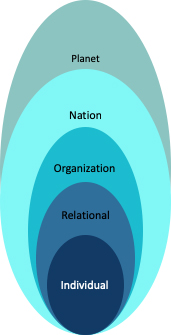By Katie Mansfield, reprinted with permission; first published electronically from STAR/ Center for Justice and Rebuilding partnered with EMU (Eastern Mennonite University) based in Virginia. A partner in St. Paul, MN as well. Go to www.emu.edu/star to see more.
Harm is a word that can represent the impact of actions that
create pain and stress. These actions may be intentional or unintentional.
In some cases, the creator/originator of the harm is unaware of actions’ impact or unavailable to be accountable for the impact. Not all harms lead to a trauma response, though many harmful situations can contribute to daily stress.
Many traumagenic[1] systems, situations and events are routinely minimized, though they generate frustration, pain and profound bodily impacts in everyday life – and affect different bodies in different ways. Below we name a few of these traumagenic – or potentially traumatic – systems, situations or events.
In some cases, the creator/originator of the harm is unaware of actions’ impact or unavailable to be accountable for the impact. Not all harms lead to a trauma response, though many harmful situations can contribute to daily stress.
Many traumagenic[1] systems, situations and events are routinely minimized, though they generate frustration, pain and profound bodily impacts in everyday life – and affect different bodies in different ways. Below we name a few of these traumagenic – or potentially traumatic – systems, situations or events.
[1] Traumagenic: an adjective describing an event or
situation that has the potential to generate a trauma response (in body,
brains, beliefs, behaviors) in individuals and collectives.
Systemic/structural harm (“in the water” – invisible until
it’s not)
Systems and structures (land, legal, health, housing,
electoral and educational systems and organizational hierarchies, for example)
disproportionately disadvantage, threaten or exclude one identity group (or
multiple groups) and empower the dominant identity group(s), typically rooted
in historical legacies of power and domination (colonization, enslavement,
patriarchy, genocide, anthropocentrism).
Racism
Ableism
Sexism
Homophobia/trans-phobia
Demeaning someone’s religious, national, or tribal identity
Classism
Environmental destruction/dismissal of environmental science
Inter-personal harm
Behaviors that sometimes happen as one-offs and often become
patterns of interaction between particular individuals or within group culture.
*While these might happen between two individuals, they
happen within the systems and structures listed above. When these permeate an
organization, they become part of the structure/ecology.
• Dignity violations*
• Micro-aggressions*
• Bullying/abusive behavior*
• Harassment*
• Preferential treatment/exclusion*
• Gossip*
Institutional and organizational harms
Painful events or patterns unfolding in organizations or
institutions that are often inadequately addressed by the organization, yet
touch on some of our deepest human existential concerns.
• Institutional betrayal
• Silencing
• Lack of transparency
• Death or illness of colleagues
• Job uncertainty
• Leadership changes and gaps
While imaginations often go to extreme headline events (war,
genocide, continuous physical violence) in conversations about trauma, even
behaviors that might compare as everyday nuisances can add up to create the
same physical and emotional impacts on bodies, brains, beliefs and behaviors.
This build-up can create an environment of threat, disconnection, fragility,
powerlessness and distrust. It can also lead to critical pauses, restoration
and life-giving social change initiatives.
Conflict and harm
Conflict is an energy that can be expressed positively or
destructively.
Conflict:
• can be a force to identify needs.
• can prompt our best creative and transformative actions.
• can drive life-giving change at multiple levels of the
systems we inhabit.
• does not always mean someone experiences harm.
When conflict plays out in destructive or violent ways, it
can harm individuals, relationships, organizations and the wider system.
Forms of destructive conflict – violence – can range from
harmful self-talk or self-harm to gossip and derogatory comments between
individuals to yelling and bullying behaviors within groups to silencing,
exclusion, disempowerment, displacement and threats that impact large numbers
of people and the environment. Systemic or structural violence can be harder
for people to see or identify, though it impacts individuals, relationships,
organizations and the planet. Physical violence – including its more hidden
forms in terms of intimate and domestic violence – is one of the most obvious
forms of destructively expressed conflict.
General systems theory suggests every individual component
of every system influences and is influenced by every other component. One way
to visualize this is through a nested model.

nested model for organizational systems
What we do at the individual and relational level affects
the whole system.
What happens at the macro or system level affects
relationships and individuals.
Restorative justice practices offer ways to address harm and
express conflict energy in ways that are not destructive – ways to protect,
restore and enhance the system at multiple levels.
This model draws on Maire Dugan’s nested model of conflict
that showed 4 levels (issue-specific, relational, structural-subsystem,
structural-system), though we have used different language here. Dugan’s
original article can be accessed at https://emu.edu/cjp/docs/Dugan_Maire_Nested-Model-Original.pdf
Learn more about the STAR (Strategies for Trauma and
Resilience) trainings through the Center for Justice and Peacebuilding. We
offer two levels of training as well as customized training for your
organization or business.
Contact STAR today to see how we can help you understand
trauma and find resilience personally and within your institution or
organization.
Katie Mansfield 2019, lead STAR trainer at the Center for
Justice and Rebuilding, partnered with EMU (Eastern Mennonite University) in Harrisonburg, VA.
No comments:
Post a Comment